How Power Transformer Produces Acoustical Noise?
This technical article explains the acoustic noise generating mechanism inside power transformers. Transformer noise has two sources: winding vibrations and core vibrations. The single most effective way to reduce windings noise is by having a good quality controlled winding process when… Read more
Dec 05, 2012 | By Edvard Csanyi

The Purpose Of Transformer Gas Relay
The transformer gas relay is a protective device installed on the top of oil-filled transformers. It performs two functions. It detects the slow accumulation of gases, providing an alarm after a given amount of gas has been collected. Also, it… Read more
Nov 29, 2012 | By Edvard Csanyi
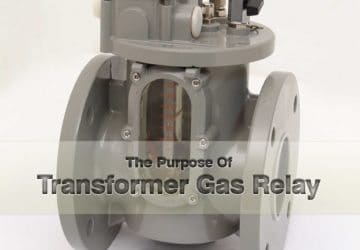
Transformer Differential Protection Principles
Similar to bus protections, transformers are protected by differential relays. Inter-winding faults (short circuits) and ground faults within power transformers can be detected by this protection scheme. Failure to detect these faults and quickly isolate the transformer may cause serious… Read more
Nov 01, 2012 | By Edvard Csanyi

Transformers Are Never Silent
Yes, we all know that transformers are never silent. This is actually quite impossible, but in an environmentally aware, highly regulated world, the issue is not the level of noise, but its nature – and it’s very important. Transformers emit… Read more
Oct 29, 2012 | By Edvard Csanyi

Safety Clearance Recommendations for Transformer
Clearance from Outdoor Liquid Insulated Transformers to Buildings (NEC) Clearance between Two Outdoor Liquid Insulated Transformers (NEC) Dry Type Transformer in Indoor Installation (NES 420.21) Dry Type Transformer in Outdoor Installation (NES 420.22) Non Flammable Liquid-Insulated Transformer in Indoor Installation… Read more
Oct 24, 2012 | By Jignesh Parmar

Definitions of Voltage Transformer Parameters
Rated voltage factor Rated primary voltage (Up) Rated secondary voltage Accuracy power Accuracy class Voltage ratio error Phase or phase displacement error Rated thermal limiting output The voltage transformer must comply with the network specifications, this is essential. As with… Read more
Oct 18, 2012 | By Edvard Csanyi

Heating of the Dry-type Transformer
Although transformers can be classified by core construction (shell or core type), the more functional types of standardized classifications are based on how the transformer is designed for its specific application, and how the heat created by its losses is… Read more
Oct 15, 2012 | By Edvard Csanyi
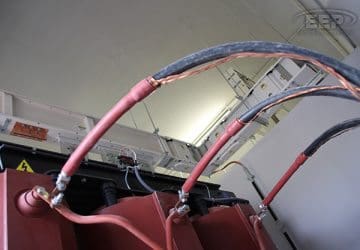
Switching Impulse Test of the Transformer
The switching impulse test is applied to confirm the withstand of the transformer’s insulation against excessive voltages occurring during switching. During the switching impulse voltage test, the insulation between windings and between winding and earth and withstand between different terminals… Read more
Oct 11, 2012 | By Edvard Csanyi
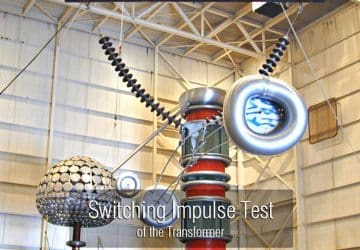
Overcurrent protection of transformer (NEC 450.3)
The overcurrent protection required for transformers is consider for Protection of Transformer only. Such overcurrent protection will not necessarily protect the primary or secondary conductors or equipment connected on the secondary side of the transformer. Introduction Overcurrent protection of transformers… Read more
Oct 08, 2012 | By Jignesh Parmar

Dry Transformer Percent Impedance Definition
The percent impedance is the percent voltage required to circulate rated current flow through one transformer winding when another winding is short-circuited at the rated voltage tap at rated frequency. %Z is related to the short circuit capacity of the transformer during short… Read more
Oct 03, 2012 | By Edvard Csanyi

Right Choice of Dry Type or Liquid-Filled Transformer
1. Two Types of Transformers 2. Cooling and insulating system 3. Losses 4. Operating Life of Transformer 5. Maintainability 6. Repairability 7. Core/Coil Reclamation and Recycling 8. Operating Sound Level and Noise Pollution 9. Footprint 0. Conclusion Information on the… Read more
Sep 29, 2012 | By Edvard Csanyi

Differences between Shunt Reactor and Power Transformer
Shunt Reactor and Transformer both appear similar in construction. Reactors are also often equipped with Fans for cooling similar to Power Transformers. However, there are major differences between the two. While a Power Transformer is designed for efficient power transfer… Read more
Sep 18, 2012 | By Edvard Csanyi
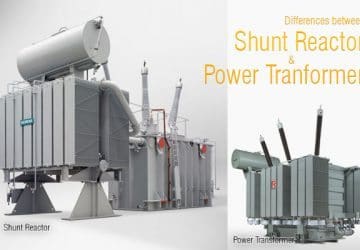
Transformer Heat, Copper and Iron Losses
The thermal ratings of a transformer are determined by the following three factors: The amount of heat produced in the windings and connections. The amount of heat produced in the iron core. How effectively the heat can be removed from… Read more
Sep 06, 2012 | By Edvard Csanyi

Transformer differential protection (ANSI 87T)
Transformer differential protection protects against short-circuits between turns of a winding and between windings that correspond to phase-to-phase or three-phase type short-circuits. If there is no earthing connection at the transformer location point, this protection can also be used to… Read more
Sep 05, 2012 | By Edvard Csanyi
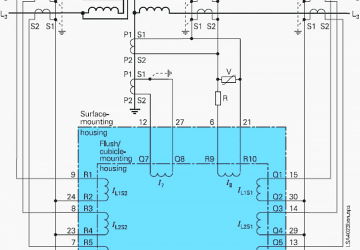
Transformers Connected Directly to Generators
Power transformers connected directly to generators can experience excitation and short-circuit conditions beyond the requirements defined by ANSI/IEEE standards. Special design considerations may be necessary to ensure that a power transformer is capable of withstanding the abnormal thermal and mechanical aspects that… Read more
Sep 01, 2012 | By Edvard Csanyi


